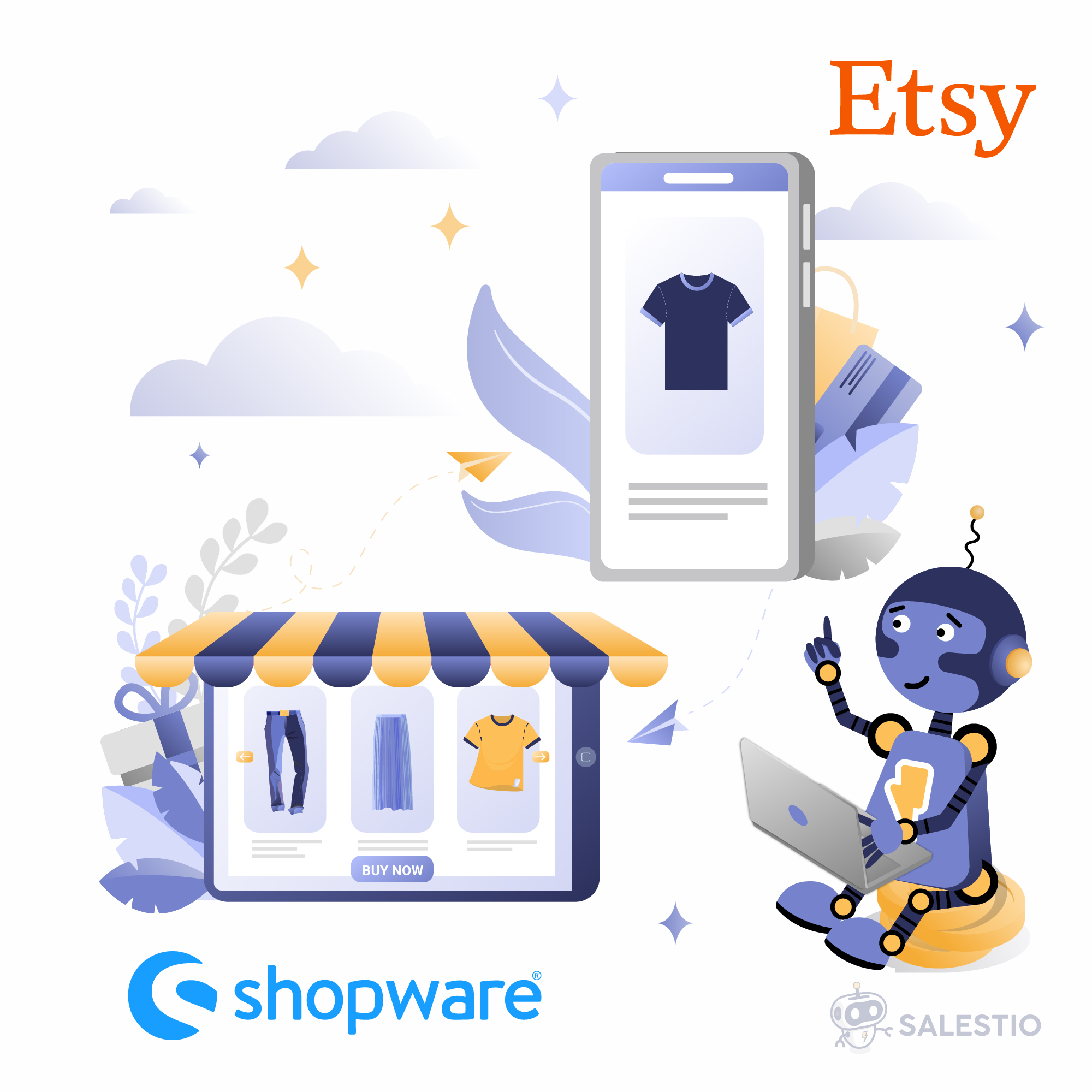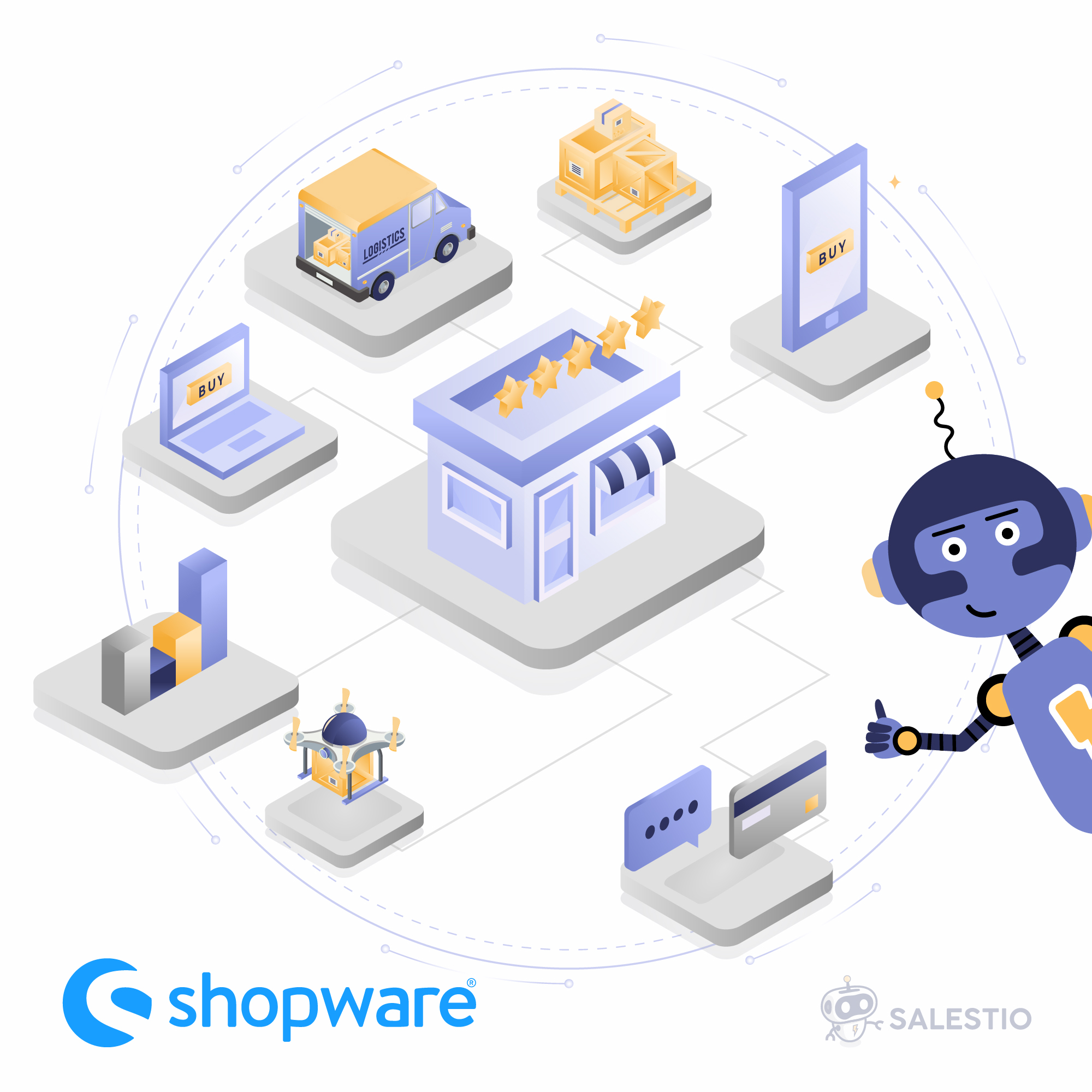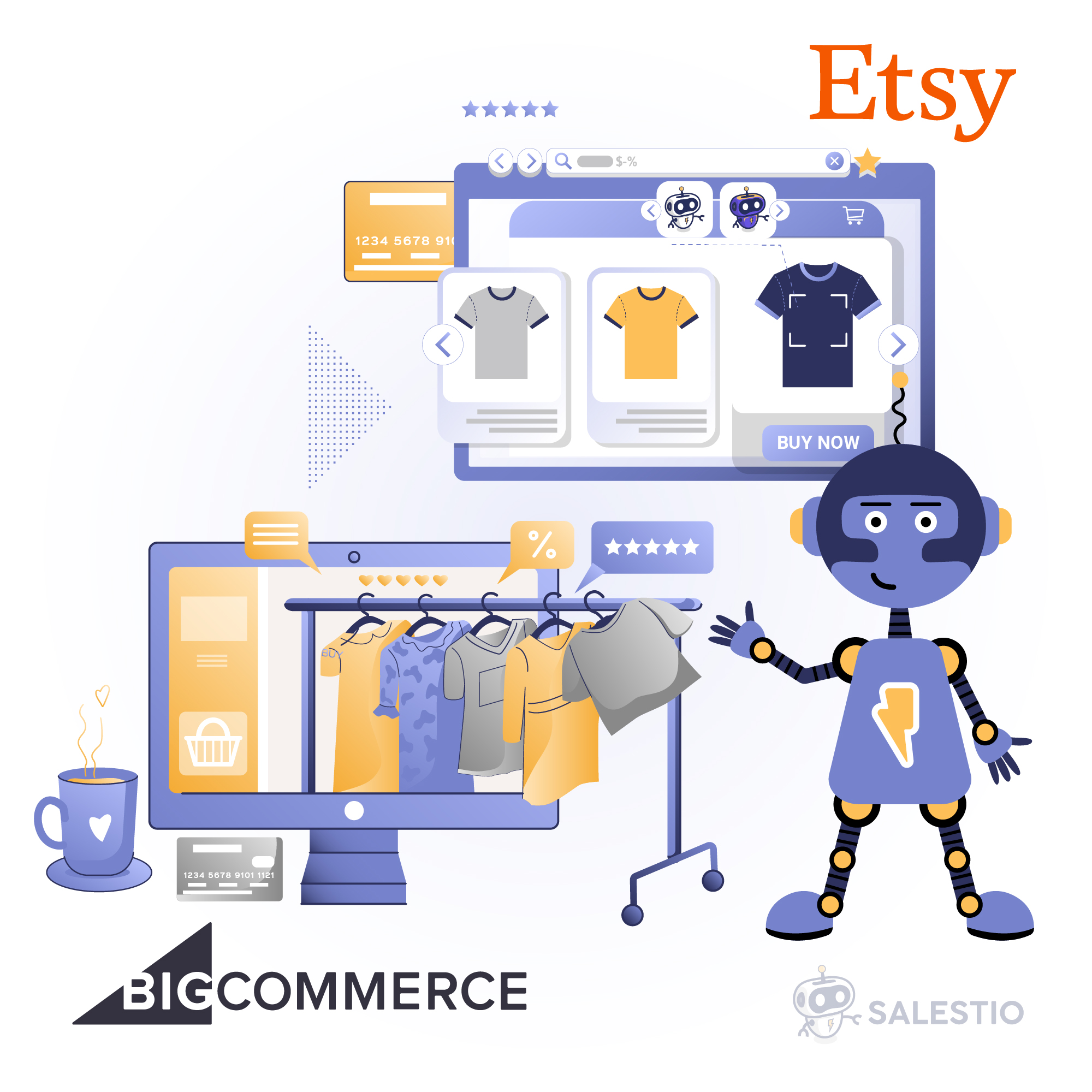08 Oct'21

Many merchants choose to use eCommerce platforms for their business, and many of them would like to know more about order fulfillment. What is the difference between them? Which one should I use? And how does it work in these different systems? We described basic fulfillment terms and practices in the first article. Order fulfillment on Shopify and BigCommerce, and how it is supported by our app, Salestio, was also described there. If you are interested in any of the above, please consider checking this blog post Order Fulfillment in eCommerce Platforms, Part 1 (Shopify, BigCommerce).
Similarly, as was mentioned in the first part, we show the order fulfillment process from the sellers’ standpoint who fulfill their orders themselves. However, the same or mostly the same process is used when your orders are fulfilled by the 3PL services.
Order Fulfillment in PrestaShop
Order statuses in PrestaShop might vary depending on if the order was created from Front Office (buyers add products to cart) or from Back Office (you manually create the order). The payment method also influences the order statuses transition. Order statuses need special care and handling.
PrestaShop has built-in settings that allow managing Order Statuses. It includes a set of default order statuses that you can configure and delete. To access this page, you should navigate to Configure > Order Statuses > Statuses. You can also add your own order statuses from here.

This view shows you if and when the email is sent to the customer and the email template associated with this status change. To modify the status settings, click the Edit button at the end of the order line. On the next page, you can update the status name, add an icon, choose the color, select what actions are triggered when the order changes to this status. When you add a new order status, the form looks exactly the same.

In our example, ‘Send an email to the customer…’ is checked. Therefore, it shows the associated email template that you can change and preview. To add new templates, edit and preview the email content, go to the International > Translations. It works even when you do not need any translated emails on your site, just select 1 language. To access emails, make sure to select ‘Email translations’ in the Type of Translation field.

Click the Modify button, and you will be presented with the list of email templates.
When order statuses and email templates are set, you start receiving new orders, all orders can be accessed from the Orders > Orders navigation. Here you can view the statistics, and the actual orders along with the order statuses, and details. You can also manually create a new order from here.

If you did not set anything specific in Order Statuses, you can fulfill the orders that are in the Payment Accepted status. To fulfill the order, click anywhere on the order line. Order details will be displayed on the next page.
Here you can view more details on the purchase. It includes order info, status history, shipping, payment, customer info, messages, and other blocks. When you are ready to send the purchased product to the client, scroll down to the Shipping section, and click the Edit button. Here you can add the tracking number and select the carrier.

After all, is set, you can go ahead and manually update the Order status to Shipped.

Remember the client will receive the notification if the email is enabled for this particular status updated as we described above. However, here you can also send a custom message to your buyers. It might be useful to notify the buyer if the item is temporarily out of stock, or if you can offer another option like in different color or configuration. You can also do so from the Order details page. Scroll a bit down, and on the right side, you will see the Messages block. Here you can also select from the template or add custom text.

These are the main steps that you will need to go through to fulfill the orders on PrestaShop. Surely, the steps might vary depending on your Fulfillment workflow, and depending on the product categories you sell. You can also various modules that can enhance the whole process or some steps of it like adding extra payment options, for example.
Order fulfillment on Amazon
Sellers on Amazon have two options for delivering their goods to customers: you can do it yourself by managing your own inventory and shipping to customers (merchant-fulfillment), or you can let Amazon handle the packaging, labeling, and shipping through Fulfillment by Amazon (FBA). Each method has its advantages. You just need to decide which one is best for your business.
In this article, we want to give you more details on how the FBA method works.
Fulfillment by Amazon (FBA)
So, what is actually FBA? With FBA, you ship your products directly to Amazon’s warehouses. Amazon stores the inventory and ships the goods to your buyers when the order is received (2-day Prime shipping). All customer service is handled by Amazon.
To enroll in the FBA program, log in to your Seller Central account, and follow this link to join FBA. You will be presented with the Getting started page. Here you should read what FBA is about and acknowledge the Amazon services agreement. When you are ready, click the ‘Get started with Fulfillment by Amazon’ button.

The next step is to create your product listings on Amazon. If they have already been created, go to your Seller Central account, Inventory > Manage Inventory. Select the listings that you want to be fulfilled by Amazon, click the Action button at the end of the listing raw, and select ‘Convert to Fulfilled by Amazon’.

By the way, if you did not confirm your enrollment on the Getting started page, on the next screen you will be presented with the same page to confirm your enrollment.
Then you should prepare your products to be sent to Amazon warehouses. This process includes packaging and labeling of the boxes. Depending on the product categories you are selling, the requirements might vary. We would recommend checking the following link on Packaging and Prep requirements for different product categories.
Hint on Amazon links in this article. Here we give links to the international Amazon website amazon.com. If you sell on a specific marketplace, you can adjust the link to work for your Seller Central account. To do so, replace ‘com’ in the address bar with what is relevant for your marketplace. Here is an example of how to get this link for working for the UK marketplace.

Make sure to be logged in to your Seller Central account as many of these links would work only for the logged-in users. Switching to your specific marketplace might also be useful in terms of language. After you reload the page, it will be displayed in your marketplace language.
When your products are packed and ready to be sent, you should create a shipping plan. You can start from your Inventory page. If you sell the whole inventory to Amazon, click the Inventory tab and select the Send/replenish inventory. If you want to send only specific products from your Inventory, find the product in the list, and select Send/replenish inventory from the actions menu. You will need to create a new shipping plan if this is the first time you send your Inventory to Amazon. More details on the whole process are in the support article from Amazon.
Shipping your goods to Amazon warehouses might look a bit challenging. However, after you do it once, it will become a lot easier. On the other hand, you would not need to worry about separate orders and products after that. Amazon will handle all that for you.
Orders Fulfillment on eBay
Manual fulfillment on eBay might be useful if you receive just a couple of orders a day as you need to update everything manually, starting from changing the order status to updating the stock level for the product. In all other cases, it might be reasonable to consider a 3PL service or eBay order fulfillment.
When you get a new sale on eBay, you can find it under the Selling > Sold menu item.

When you open this page, you will see the list of orders. Find new orders and open them one by one. Then you should add the tracking number and changed the order status to Shipped. Remember to go back to your Active listings, find the needed listing, and update the stock level.
As your business grows and you need to process more than 100 orders per day, this lower cost may not cover the damage to your business caused by over-selling and slow shipping, so you might want to consider another way to process eBay orders.
Order Statuses Updates in Salestio (PrestaShop)
Our company has developed two PrestaShop modules that support orders import and orders statuses updates for Amazon and eBay. The name of the module that supports eBay Integration is called PrestaBay, and the one for the Amazon integration is Prestazon. We are going through the rebranding process, and in the later Prestazon version, you might see it called Salestio (Amazon).
The handling process is quite similar to how Salestio handles updates in Shopify and BigCommerce that we described in Part 1 of this blog post.
What is a bit different is that you need to make sure to turn the Synchronization on for both modules, PrestaBay and Amazon (Salestio). To do so, navigate to either of the modules and select Synchronization from the module navigation.

On the next page, switch to the Orders tab, and make sure that synchronization is Enabled. Here you can also set how to find the reference to create PrestaShop order from Amazon/eBay order.

Let’s start with the Amazon integration. Important notice is that our module supports only the Fulfilled-by-merchant (FBM) fulfillment method. An Amazon order is automatically imported to PrestaShop orders if product SKU matches on both platforms and the product is in stock in PrestaShop. If any of the orders is not imported to PrestaShop, the first thing to go and check would be inside the module. All orders imported from Amazon appear under the Orders tab in the module. Here is an example of the order details page.

Any errors can be found at the bottom of the page under the Logs. If there is an error, you should resolve it (SKU or stock), and then the order will be imported to PrestaShop. You can handle the PrestaShop order as we described above, or it can be also handled by the 3PL service. The main thing the tracking number and shipping service are added to the order and the order status is changed to Shipped. It will allow sending order status updates back to Amazon so that your buyers could track their purchases.
With PrestaBay, the eBay integration module, everything works pretty much the same. An eBay order gets imported to PrestaShop Orders when the reference (SKU) is found for the corresponding product on PrestaShop, and the stock exists for this item. You should fulfill the order, add the tracking number and shipping service. Then PrestaBay will be able to send tracking details back to eBay. Again, if you noticed that an eBay is not getting imported to PrestaShop, go to PrestaBay > Orders.

Then you should select the needed order, look at the logs, resolve the errors, and proceed like with all other PrestaShop orders.
With this blog post, we finished our series on how to fulfill orders on popular e-commerce platforms. Hopefully, it resolved any of the confusion you might previously have. Here is the link to the first part. Which part of these two articles was the most useful? Feel free to share your thoughts on this.
Have any ideas or suggestions on what topic we should talk about next in our blog? Do not hesitate to let us know.
You can find PrestaBay and Salestio on the PrestaShop addons marketplace.
The documentation page for various Salestio integrations is available at our help center.





